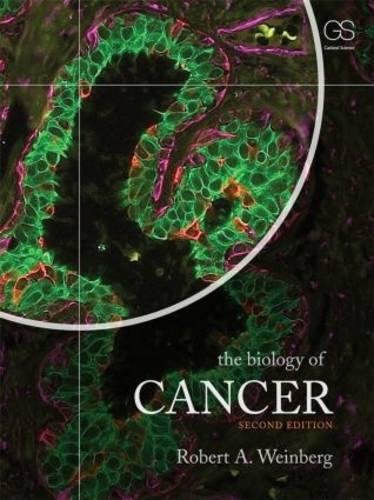If you looking for data interpretation for medical students then you are right place. We are searching for the best data interpretation for medical students on the market and analyze these products to provide you the best choice.
Best data interpretation for medical students
1. Data Interpretation for Medical Students
2. Bakerman's ABC's of Interpretive Laboratory Data
Description
New book shipped from our warehouse3. Bakerman's ABC's of Interpretive Laboratory Data
Feature
Used Book in Good ConditionDescription
A new edition to this classic, a must-have pocket-sized quick reference for all medical students and residents to interpreting clinical laboratory data.4. The Biology of Cancer, 2nd Edition
Feature
Used Book in Good ConditionDescription
The definitive text on cancer biology, thoroughly updated
5. Cell Biology by the Numbers
Feature
Garland ScienceDescription
A Top 25 CHOICE 2016Title, and recipient of the CHOICE Outstanding Academic Title (OAT) Award.
How much energy is released in ATP hydrolysis? How many mRNAs are in a cell? How genetically similar are two random people? What is faster, transcription or translation?
Cell Biology by the Numbers explores these questionsand dozens of othersproviding a richly illustrated and handy reference for students and researchers in molecular and cell biology, chemistry, and biophysics.
The book features question-driven vignettes and "back of the envelope" calculations that investigate some of the key numbers in cell biology. Readers will learn about the sizes, concentrations, rates, energies, and other numbers that describe and drive the living world.
6. Intensive Longitudinal Methods: An Introduction to Diary and Experience Sampling Research (Methodology in the Social Sciences)
Feature
Guilford PublicationsDescription
7. The Hands-on Guide to Data Interpretation
Feature
Used Book in Good ConditionDescription
Not sure how to interpret the wealth of data in front of you?Do you lack confidence in applying the results of investigations to your clinical decision making?
Then this pocket-sized, quick reference guide to data interpretation may be just right for you.
The Hands-on Guide to Data Interpretation is the perfect companion for students, doctors, nurses and other health care professionals who need a reference guide on the ward or when preparing for exams. It focuses on the most common investigations and tests encountered in clinical practice, providing concise summaries of how to confidently interpret investigative findings and, most importantly, how to apply this to clinical decision making.
The benefits of this book include:
-
An overview of the normal ranges of test results, followed by a consideration of the differential diagnoses suggested by variance from these values
- Arranged by system to allow quick access to the key investigations encountered in different specialties
- A summary patient data chapter to bring the different specialties together, providing an overview to completing investigation documentation and charts
- Summary table and bullet point format, with a full index, to aid rapid retrieval of information
- Each chapter reviewed by a specialist to ensure an accurate, practical approach to data interpretation
Take the stress out of data interpretation with The Hands-on Guide!
8. Statistics for Terrified Biologists
Feature
Wiley-BlackwellDescription
We highly recommend itnot just for statistically terrified biology students and faculty, but also for those who are occasionally anxious or uncertain. In addition to being a good starting point to learn statistics, it is a useful place to return to refresh your memory. The Quarterly Review of Biology, March 2009"During the entire course of my Ph.D. I've been (embarrasingly) looking for a way to teach myself the fundamentals of statistical analysis. At this point in my education, I've come to realize that often times, simply knowing the basics is enough for you to properly apply even the most complex analytical methods. Statistics for Terrified Biologists has been just such a book - it was more than worth the $40 I spent on it, and while my 'book clubs' aren't meant to be reviews, I highly recommend the book to anyone who's in a similar predicament to my own." Carlo Artieri's Blog Book Club
The typical biology student is hardwired to be wary of any tasks involving the application of mathematics and statistical analyses, but the plain fact is much of biology requires interpretation of experimental data through the use of statistical methods.
This unique textbook aims to demystify statistical formulae for the average biology student. Written in a lively and engaging style, Statistics for Terrified Biologists draws on the authors 30 years of lecturing experience. One of the foremost entomologists of his generation, van Emden has an extensive track record for successfully teaching statistical methods to even the most guarded of biology students.
For the first time basic methods are presented using straightforward, jargon-free language. Students are taught to use simple formulae accurately to interpret what is being measured with each test and statistic, while at the same time learning to recognize overall patterns and guiding principles. Complemented by simple illustrations and useful case studies, this is an ideal statistics resource tool for undergraduate biology and environmental science students who lack confidence in their mathematical abilities.
9. Data Interpretation Made Easy: For Medical Students and Junior Doctors











